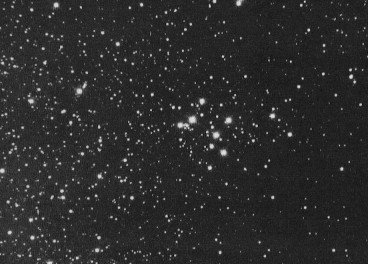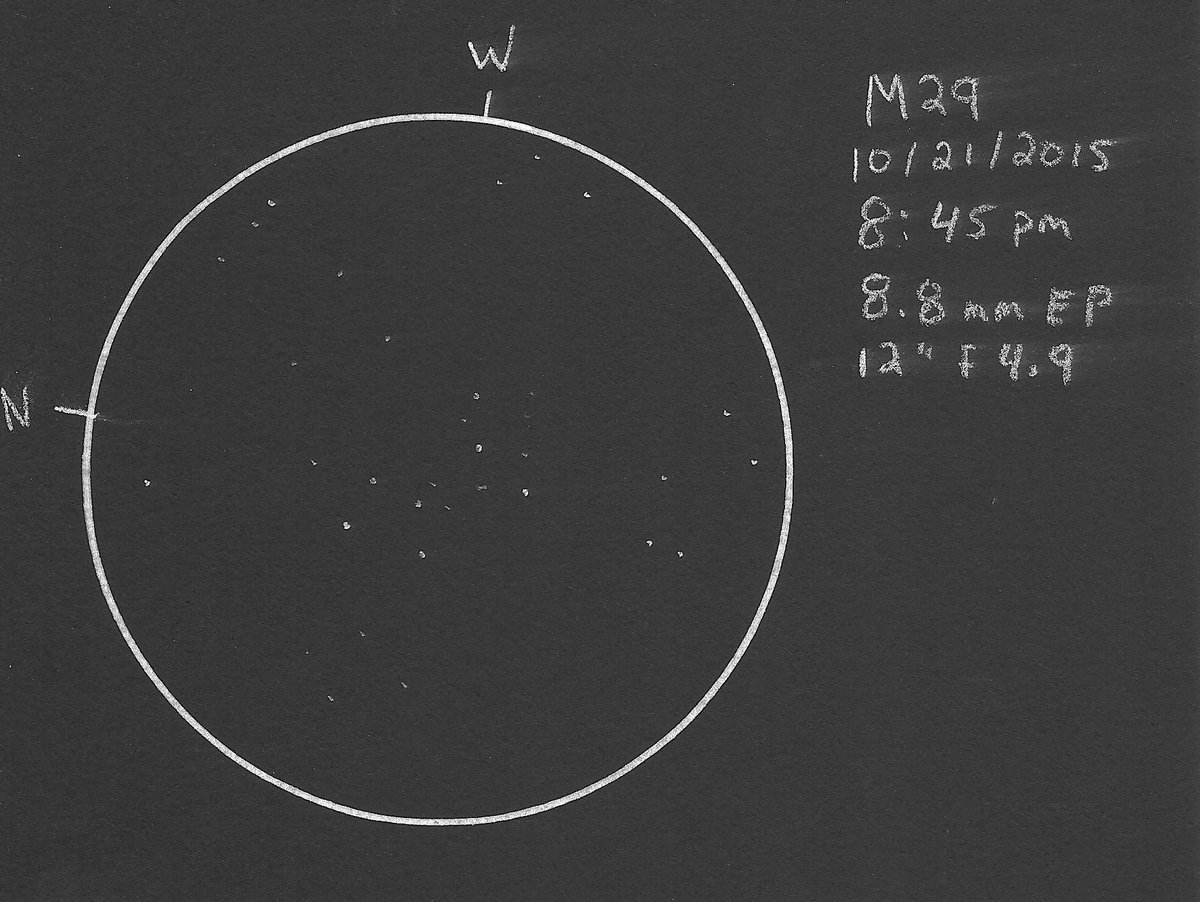Current Info for Observer
as of 07/27/2024 8:27 a.m.
Please login to view current observation details
General Info
| Type | Open Cluster |
| Constellation | Cygnus |
| Right ascension | 20h23'57.700'' |
| Declination | +38°32'28'' |
| Magnitude | 7.100 |
| Distance | 4,000ly |
| Size | 7 arc min |
| Catalog Designations | NGC6913, M29 |
| Discovered | 1764 Charles Messier |
Generate a finder chart
The following form will generate a PDF finder chart suitable for printing using to locate objects in the sky with your telescope!
The Date is only really useful for solar system objects, as deep space objects move measurably only on a galactic timescale.
The larger the F.O.V (field of view), the more "zoomed out" the object will appear. It can be helpful to print several charts of the same object with different field of views.
Limiting the magnitude (remember, lower magnitude means brighter!) of stars and objects can make sure your chart is not cluttered with dim objects that you may not be visible to you anyway. The defaults are good, but try experimenting with raising and lowering the values.
Orion 10XTi
20 points
10" Dobsonian
20 points
Celestron 127eq
20 points
Waiting for Orion to rise, I decided to take a look at this open cluster. Very pretty, could clearly see box shape.
10x50s
20 points
This cluster shows me why Messier thought these objects were comets, in binoculars the cluster isn't resolved and looks exactly like a faint comet. Edit: In the telescope the box shape is visible with a couple stars scattered inside.
Please login to post comments

